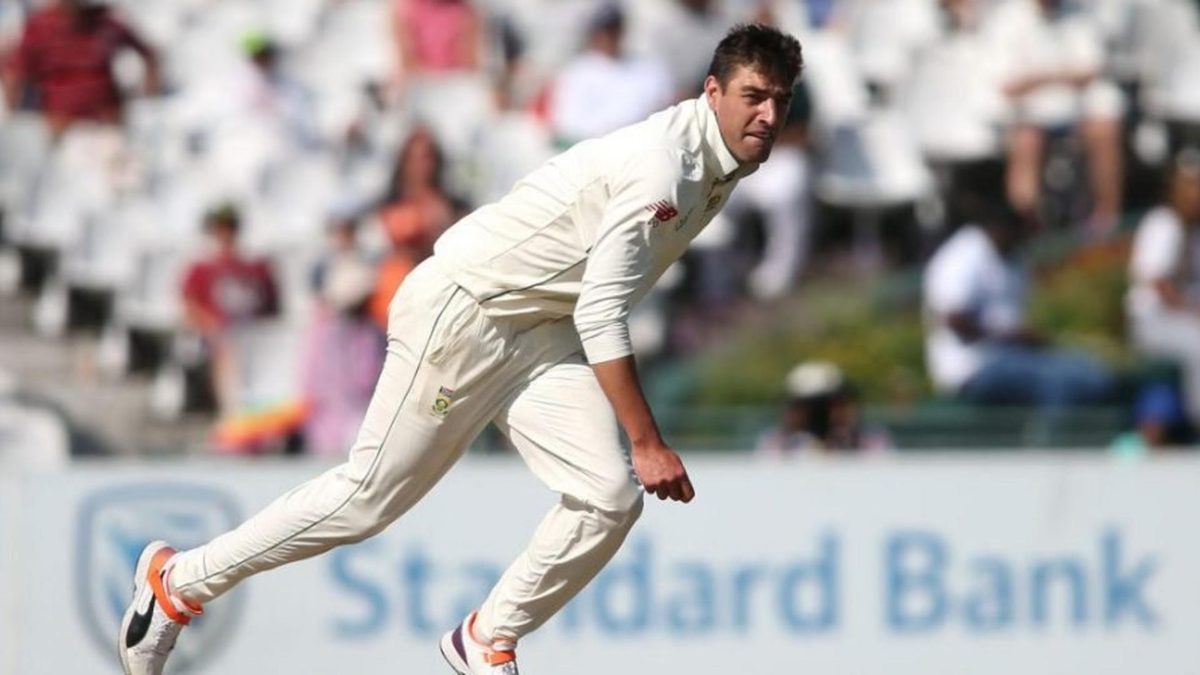
Duanne Olivier’s departure to a Kolpak deal in 2019 left South Africa’s hardcore fans fuming, but two years later the fast bowler is imminent for a return and is showing signs of resuming where he left off, writes Rohit Sankar.
Duanne Olivier holds the record for the best bowling strike rate (a perfect 30.0) in the history of Test cricket with a very basic filter. Remember that this list includes the Lohmanns and Spofforths of this world, bowling in the 19th century to reel off records at will.
Even in the era of stepping into Test cricket with relative ease – think of Kyle Jamieson, Kyle Mayers, and Axar Patel – Olivier’s record remains intact. In 10 Tests and 1440 balls bowled, the South Africa seamer has 48 wickets, which translates to one wicket every 30 balls he bowls.
On top of the world in 2019, with 50 Test wickets right before his eyes, Olivier took a Kolpak deal with Yorkshire, effectively then ending his ties with international cricket, although he later expressed his ambitions to try and qualify for England.
Two years since, the landscape has changed dramatically. Olivier had three middling seasons in England, averaging 31.02, 36.40, and 33.8, but more importantly, is no longer a Kolpak player with the loophole coming to a close at the end of 2020 in the wake of Brexit.
Olivier, like several of his compatriots, returned to their country and is now eligible to play for South Africa again. Wayne Parnell already did. Olivier has made himself available for the Proteas again, and has won a Test recall this month against the touring India side, not on the back of his record in England, but for instantly showing why he could resume where he left off in South Africa.
In the South African four-day competition this season, Olivier is the top wicket-taker with 28 wickets at an average of 11.14 and a strike rate of 23.1. He also completed 500 first-class wickets in the process, reaching the feat before the age of 30, and frankly, his career numbers are as absurd: an average of 22.8 and strike rate of 42.4.
With South Africa searching for a third wheel to the potentially world-class tie-up of Kagiso Rabada and Anrich Nortje, Olivier’s return, and his current form, augurs well. While Rabada is more of a rhythm bowler, Nortje bowls in bursts. Olivier will likely be the workhorse in this setup, making his job meaner and more demanding, especially given his stature as a hit-the-deck bowler, threatening batters with pace and bounce.
Olivier, despite his ordinary seasons in England, picked up the one skill that could potentially make him a beast in South Africa: bowling fuller to challenge batters with seam movement. He deployed the skill to devastating effects in the four-day competition and is back to where he left off in no time. Effectively, he would be replicating the job Vernon Philander did for the Proteas in his prime. Add in Olivier’s extra zip on the ball and the ability to bounce batters out and the threat is multiplied manifold.
With his international future set to resume, Olivier’s job is fairly straightforward. If he can keep his strike rate around where it is right now in Test cricket, he’d likely finish as one of the greatest bowlers to play the sport. Dale Steyn, who finished his career with 439 wickets at a strike rate of 42.3 is an all-time great. Kyle Jamieson, who has 52 wickets right now, has a strike rate of 37.8.
The law of averages will surely catch up with Olivier too, but when the ball is thrown to him on his comeback, all his captain would want is for him to take a wicket every 30 balls. Alright, make it 40 maybe, but not more. Stick to that and he’d have done his job.








